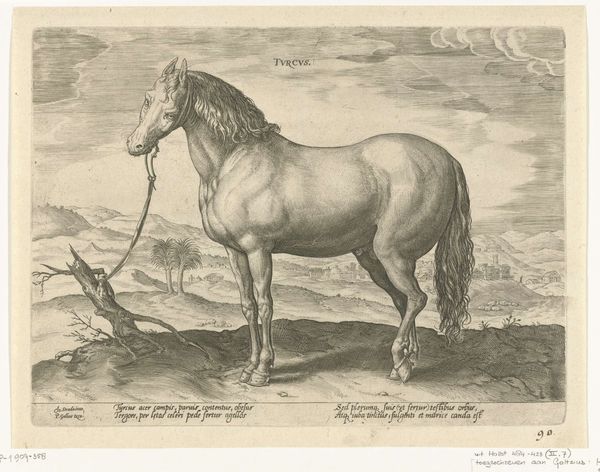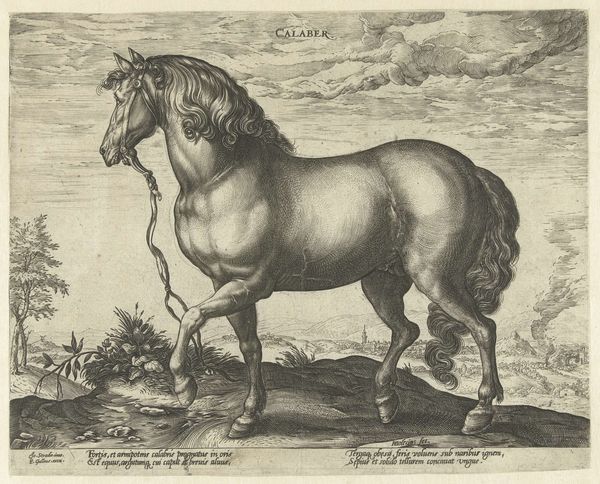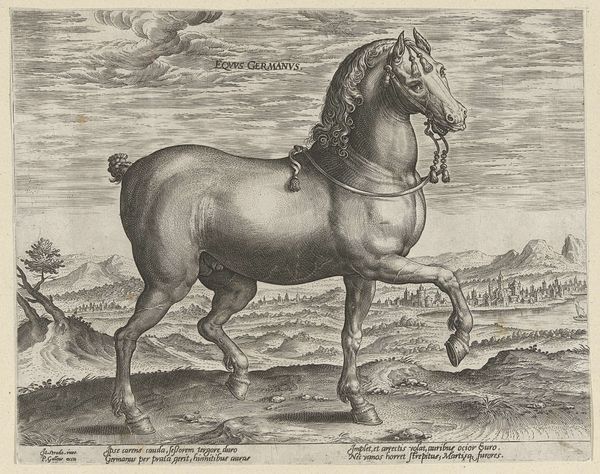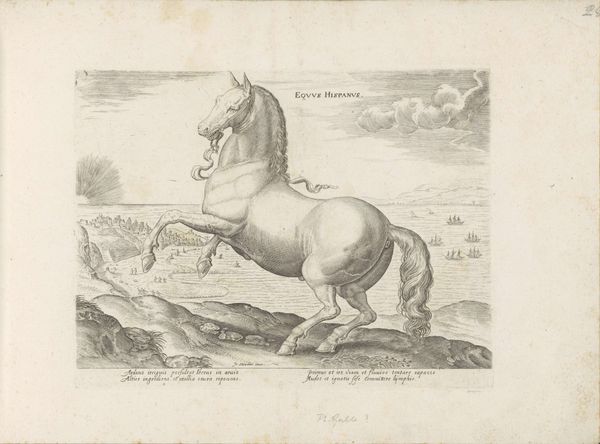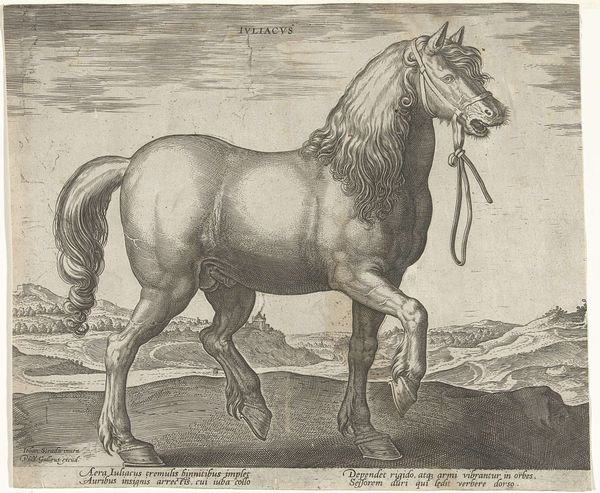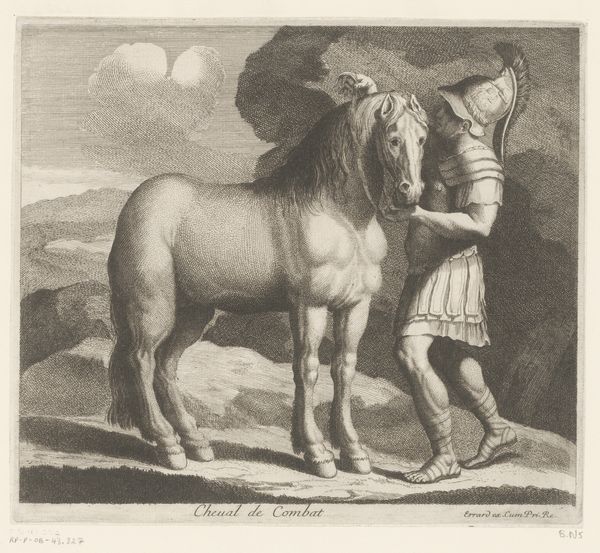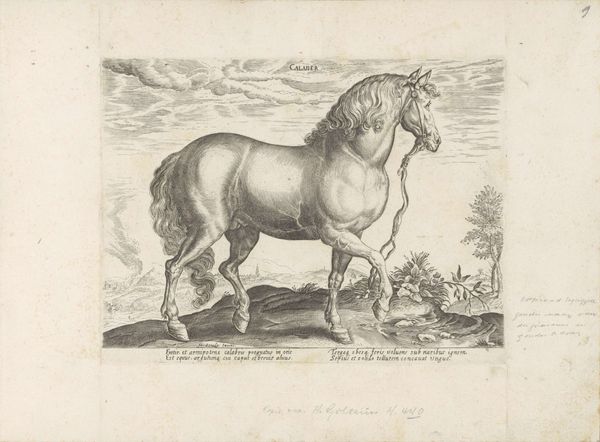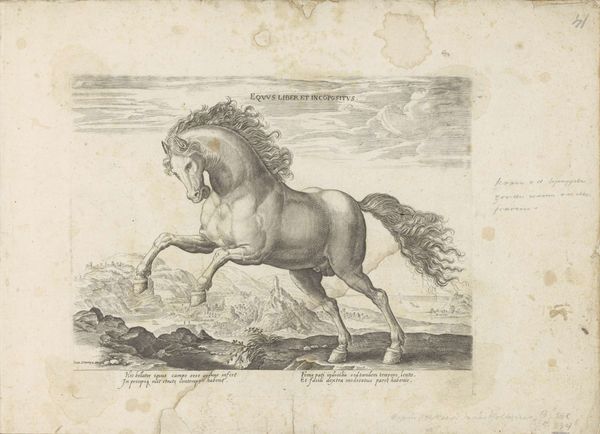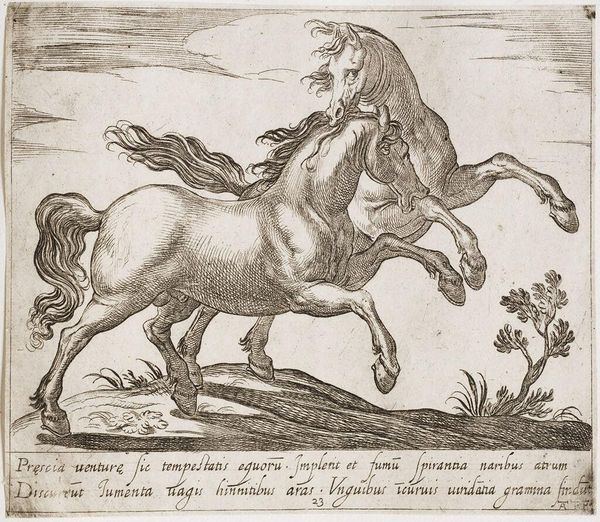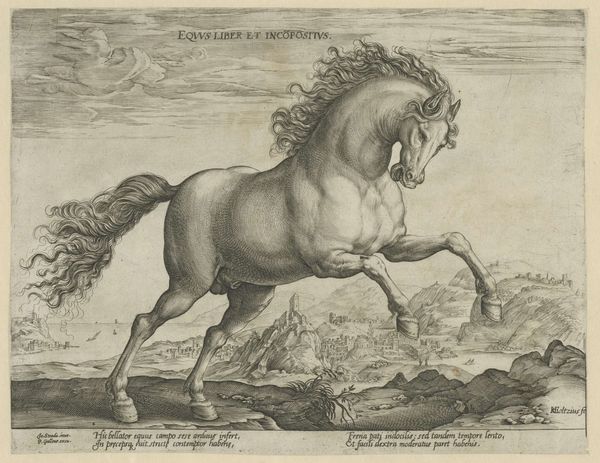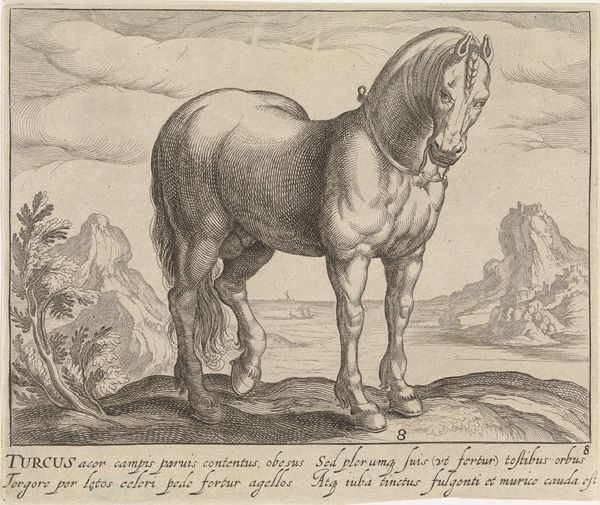
#
amateur sketch
#
light pencil work
#
quirky sketch
#
pencil sketch
#
personal sketchbook
#
pencil drawing
#
pen-ink sketch
#
horse
#
sketchbook drawing
#
pencil work
#
fantasy sketch
Dimensions: height 263 mm, width 422 mm
Copyright: Rijks Museum: Open Domain
This engraving by Lucas Vorsterman II presents us with a horse and stable boy set against a river landscape. At first glance, it’s a simple scene, yet the horse, elevated and majestic, embodies far more than mere equine beauty. Throughout history, the horse has been a symbol of power, freedom, and virility. This image, however, goes beyond the classical associations. Consider the raised hoof, a motif that echoes in equestrian statues across millennia, from Roman emperors to Renaissance princes. This gesture transcends mere depiction; it's a declaration of dominance and control. In psychoanalytic terms, the horse can also be seen as a representation of primal instincts and untamed energy. This resonates with the subconscious, evoking a sense of both admiration and a subtle undercurrent of fear, a powerful force engaging viewers on a deep, subconscious level. The horse, as a recurring symbol, invites us to consider the cyclical nature of symbols, forever resurfacing, evolving, and taking on new meanings as they gallop through the corridors of time.
Comments
No comments
Be the first to comment and join the conversation on the ultimate creative platform.

